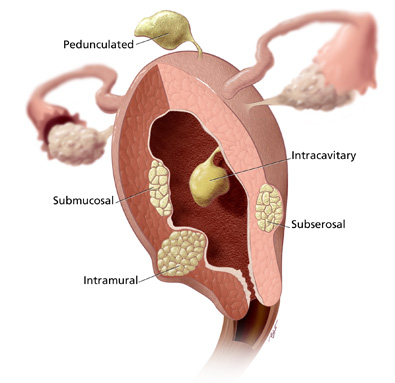da Vinci® Myomectomy
Myomectomy
Myomectomy Surgery Miami
Myomectomy is the surgical procedure of removing uterine fibroids from your uterus, and repairing the uterine wall and leaving your uterus in place. Each year, approximately 65,000 myomectomies are performed in the United States. Myomectomies are preferred for women planning future pregnancies. Myomectomy can be done using open surgery or minimally invasive surgery.

Open Surgery
Myomectomy is often done using traditional open surgery where a long incision is made to allow instruments to be inserted into the body and large enough for the surgeon to fit their hands and visualize the organs. Due to the large incision that must be made some patients experience drawbacks.
Minimally Invasive Surgery
Traditional laparoscopy
This surgery includes the use of a tiny camera and thin tools. During traditional laparoscopy, plastic tubes are inserted through the incisions. One of the instruments used is the laparoscope, it is a thin, lighted tube with a tiny camera at the end. The camera projects images to a video monitor which guides surgeons as they operate.
Another minimally invasive surgical option for women is the da Vinci Myomectomy.
da Vinci Myomectomy
With minimally invasive da Vinci Myomectomy, surgeons make just a few small incisions instead of a large one. The da Vinci System features a magnified 3D high-definition vision system and special miniature wristed instruments that bend and rotate to a greater degree than the human wrist. As a result, da Vinci allows your surgeon to operate with enhanced sight, accuracy, control.
Surgical Robotic Technology
State-of-the-art da Vinci uses the most modern surgical and robotic technology and is beneficial for performing complex surgery. Your surgeon is 100% in control of the da Vinci System, which exchanges their hand movements into smaller, more precise movements of small instruments inside your body. Although it is often referred to as “robotic”, it cannot function without the doctor.
PN 1002180 Rev B 01/2014
- Lumsden MA. Embolization Versus Myomectomy Versus Hysterectomy: Which is Best, When? Hum Reprod. 2002; 17:253-259. Review.
Serious complications may occur in any surgery, including da Vinci® Surgery, up to and including death. Examples of serious or life-threatening complications, which may require prolonged and/or unexpected hospitalization and/or reoperation, include but are not limited to, one or more of the following: injury to tissues/organs, bleeding, infection and internal scarring that can cause long-lasting dysfunction/pain. Risks of surgery also include the potential for equipment failure and/or human error. Individual surgical results may vary.
Risks specific to minimally invasive surgery, including da Vinci Surgery, include but are not limited to, one or more of the following: temporary pain/nerve injury associated with positioning; temporary pain/discomfort from the use of air or gas in the procedure; a longer operation and time under anesthesia and conversion to another surgical technique. If your doctor needs to convert the surgery to another surgical technique, this could result in a longer operative time, additional time under anesthesia, additional or larger incisions and/or increased complications.
Patients who are not candidates for non-robotic minimally invasive surgery are also not candidates for da VinciSurgery. Patients should talk to their doctor to decide if da Vinci Surgery is right for them. Patients and doctors should review all available information on non-surgical and surgical options in order to make an informed decision. For Important Safety Information, including surgical risks, indications, and considerations and contraindications for use, please also refer to www.davincisurgery.com/safety and www.intuitivesurgical.com/safety. Unless otherwise noted, all people depicted are models.




